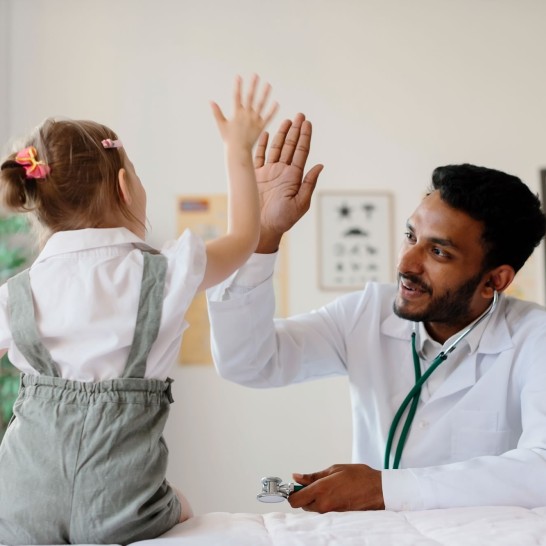Pollens from schoolyard trees and grasses may trigger your child’s allergies. Or indoor allergens such as mold and animal dander may set them off.
Make a reference card about your child’s triggers and reactions for the school nurse. Be sure to include your child’s typical allergy symptoms and what triggers them, medication and mobile telephone numbers to reach you.
Allergy signs may show up in the classroom if they are unable to focus or easily distracted. Coughing may mean that allergy symptoms are worsening. Red eyes and allergic shiners are common symptoms of allergies.
You may not know all the allergens at school that trigger or worsen your child’s symptoms. They include dust mites, animal allergens, mold, chalk dust and strong odors.
Doctor may suggest allergy shots to help your child deal with allergy season.
Symptoms
- Runny nose
- Congestion
- Watery, itchy eyes
- Sneezing
- Allergic shiners
- Crease across bridge of nose
Outdoor triggers
- Tree pollen
- Weed pollen
Indoor triggers
- Dust mites
- Dander from dogs and cats
- Cockroach droppings
- Indoor mold
Prevention
- Seal pillows, mattresses, and box springs in allergen-proof covers.
- Vacuum regularly to suck up indoor allergens.
- Wash sheets and blankets.
- Keep pets out of the bedroom. Replace carpet with hardwood on the floors
Is it a cold or do they have allergies?
A rule of thumb is that colds last seven to 10 days and then resolve. Common colds are viral infections that affect children.
A cold has thick, yellowy or green nasal discharge.
Saline nasal rinse several times per day helped improve nasal symptoms of the common cold in children and possibly reduced the risk of a relapse.
Does your child get a runny nose during pollen season or hives after eating certain foods? It could be time for allergy testing. If allergy medication doesn’t work, send your child to an allergist, especially if cold-like symptoms last more than a week, your child has asthma, your child has hives or skin rashes, or your child is coughing or wheezing, especially at night
If both parents have allergies, a child has a 75 percent chance of having allergies. If one parent has allergies, a child has a 50 percent chance of having them.
There may be skin tests or blood tests to know for sure.
If the allergist thinks your child has a food allergy, they suggest an elimination diet, starting with milk, eggs, peanuts and shellfish.
Non-sedating antihistamines are usually the first medications used to treat allergies. The most common side effects are drowsiness and dry mouth.
Allergy symptoms are often worse between 4 a.m. and 6 a.m. Giving medicine before sleep may control morning symptoms. Prescription antihistamines include Astelin, Atarax, Vistaril and Clarinex.
Drops like Pataday, Patanol and Optivar are recommended only for children over 3.
Over-the-counter antihistamines include Allegra, Benadryl, Claritin and Zyrtec.
Steroid nose sprays such as Flonase, Zetonna and Nasonex fight inflammation and help allergies.
Singulair is a prescription drug that prevents asthma attacks and is also approved for treating allergies. It reduces congestion in the nose and also cuts down on sneezing, itching, and eye allergies. It works by blocking the release of inflammatory chemicals that cause nasal passages to swell and produce a lot of mucus.
It may take a while to find the right medication or combination for your child. Working with your doctor, you can create a plan.
###
by Dr. Art Mollen
February 5, 2013
azfamily.com
You may also be interested in . . .
Pediatrics: How Early Allergy Testing & Treatment Can Benefit Young Patients
Allergies are a common yet often overlooked concern in pediatric care, affecting millions of children across the U.S. While allergy symptoms like…
Back to School Action Plan for Allergies and Asthma
As the final days of summer break come to a close, families everywhere are preparing for children to return to school. Whether this is the first year a…
Allergy Update: Preparing for your child for Back to School
UAS is in the news! UAS Chief Medical Officer Dr. Frederick Schaffer shares information on preparing children for back to school. The article is featured…


